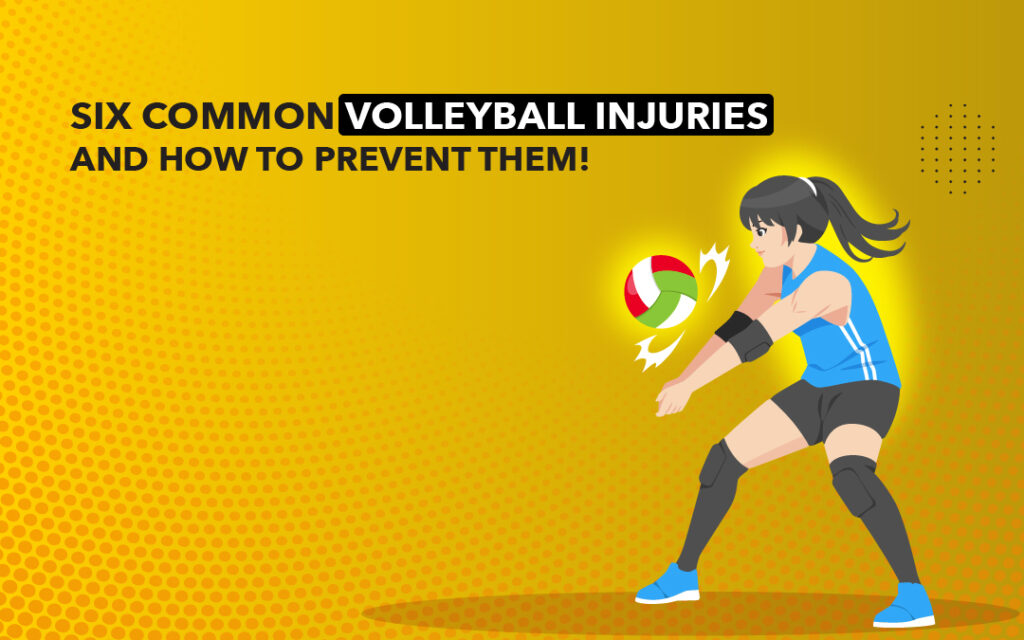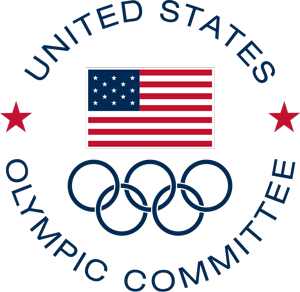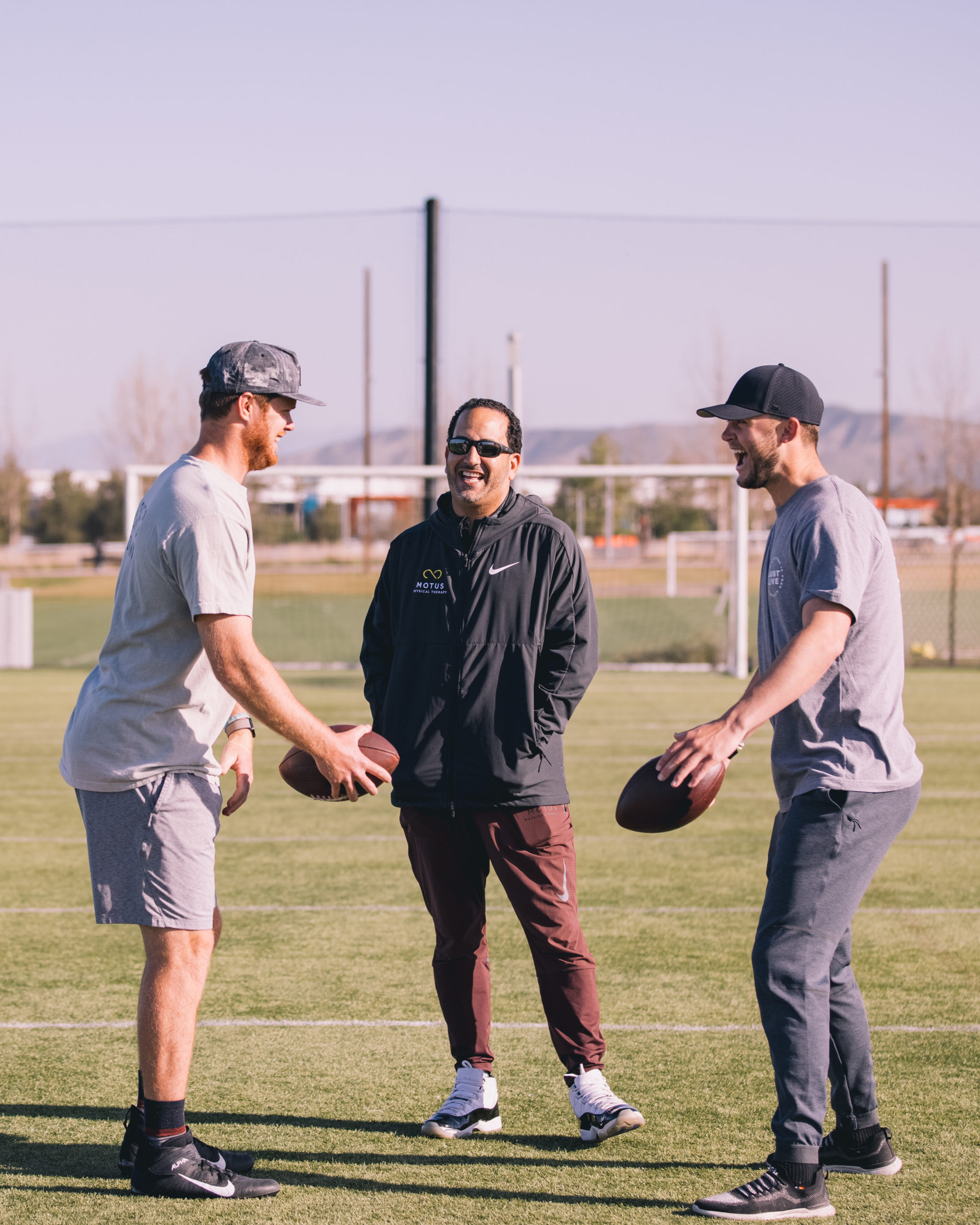
Volleyball, a sport that combines agility, strength, and teamwork, is undeniably exhilarating. Whether you’re spiking the ball over the net or diving for a save, the thrill is undeniable. However, as the saying goes, “It’s all fun and games until someone gets hurt.”
The dynamic nature of volleyball means players often push their bodies to the limit, inviting injuries. Recognizing and preventing these injuries comes before anything for anyone looking to enjoy the game long-term.
How Volleyball Injuries Occur
Every sport has its Achilles’ heel, and for volleyball, it’s the high-octane nature of the game. The never-ending jumping, eleventh-hour diving, and unexpected lateral movements are bound to take a toll on a player’s body, sooner or later.
From the ankles to the fingers, several areas are vulnerable to injuries. But fear not! With the right knowledge and a sprinkle of precaution, many of these injuries can be successfully spiked.
Ankle Sprains
Ankle sprains and volleyball are inseparable. A wrong landing or an accidental step on a teammate’s foot can lead to a twisted ankle.
Prevention tips:
1. Invest in proper volleyball footwear that provides ankle support (the ones with high tops)
2. Incorporate ankle-strengthening exercises into your routine. Think of towel stretch, toe pull, and golf ball roll.
3. Consider ankle taping if you’ve had previous sprains.
For those in Seal Beach, CA, recovering from an ankle sprain, MOTUS offers specialized therapies to get you back on your feet in no time.
Rotator Cuff Tendinitis
The rotator cuff Tendinitis is the negative return of those repetitive powerful spikes.
Prevention tips:
1. Engage in shoulder strengthening exercises. Try standard arm swings, high-to-low rows, rotation with dumbbell, and doorway stretches.
2. Learn the proper spiking technique(s).
3. Ensure you rest your shoulder regularly to avoid overuse.
If you’re feeling a pinch in your shoulder, especially in the Seal Beach, CA area, consider dropping by MOTUS. Our expert team can guide you through a recovery plan tailored just for you.
Patellar Tendinitis (Jumper’s Knee)
Jumping is second nature in volleyball, but it can lead to stress on the patellar tendon, causing inflammation. Avoiding Jumper’s Knee will ensure longevity in the sport and maintain optimal performance.
Leg strengthening exercises can be your savior here. A strong leg foundation not only enhances your game but also provides the necessary support to the knee, reducing future injuries. If you are into professional volleyball, mastering proper jumping and landing techniques is essential.
By learning to land softly and distribute the impact evenly, you can dramatically reduce the strain on your knees. Also, wear knee pads as they offer an added layer of protection, cushioning the knee during dives and falls.
Finger Fractures and Sprains
Your fingers aren’t just for setting; they’re your first line of defense. However, a mistimed block or an unexpected ball trajectory can lead to sprains or fractures. We highly recommend engaging in finger-strengthening exercises, including claw stretch, thumb extension, and thumb flex.
You should also tape your fingers if you’ve had previous injuries. Remember, it’s better to be safe than sorry. Taking precautions can save you from a world of pain down the line.
Lower Back Pain
Volleyball players often wear their pain in their backs. Thanks to repetitive spiking motions and hyper extensions, every volleyball player can’t avoid straining their lower back.
How to Prevent:
1. Incorporate core strengthening exercises (think of planks, bicycle crunch, and mountain climber) into your routine.
2. Stretch before and after each game.
3. Maintain proper posture during play.
Hamstring Strains
The hamstrings play a crucial role in your mobility on the court. A strain, which is a tear in a hamstring muscle, can severely hamper your game. Regular stretching of your hamstrings can help you avoid this injury. We also recommend warm up before a game and cool down afterward.
How Does Physical Therapy Help in Injury Prevention
Now that we have touched upon the common volleyball injuries, let’s discuss physical therapy, which isn’t just about recovery but a proactive approach to injury prevention.
From our observation, we found that regular sessions can help identify potential issues before they become full-blown problems. For volleyball players, this could mean the difference between being the star player and sitting on the sidelines. We are certain that you don’t want to fall into the latter category.
Final Thoughts
In the game of volleyball, as in life, “forewarned is forearmed.” Knowing the common injuries and how to prevent them can keep you playing the game you love for years to come. Should you ever find yourself in a pickle, remember that professional help, like the services offered at MOTUS, is just around the corner. So, spike that ball, make that dive, and play your heart out, knowing you’re well-equipped to handle whatever comes your way.





















